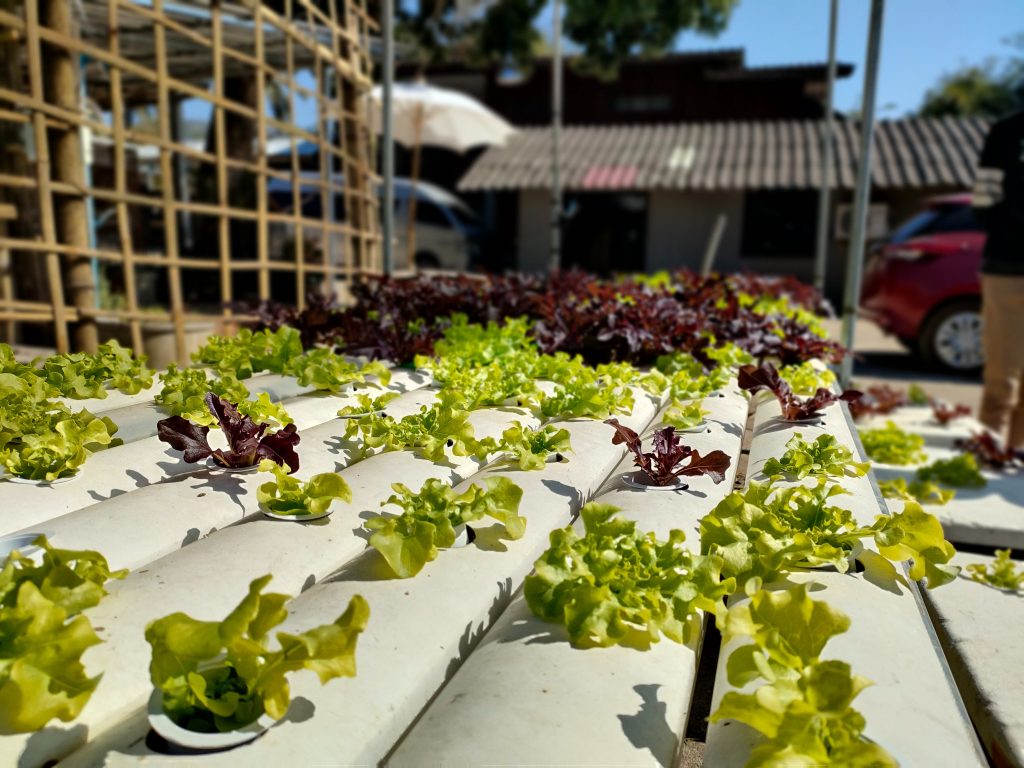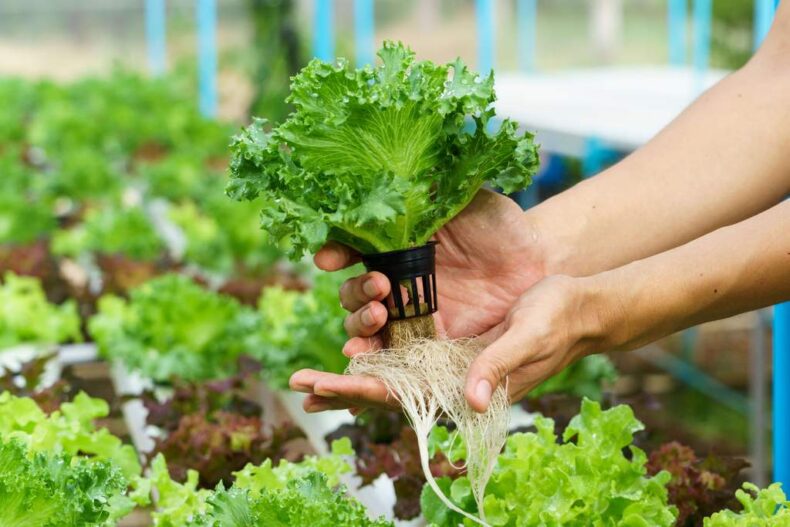Hydroponics has gained significant popularity in recent years as an innovative and efficient method of cultivating plants without soil. The success of hydroponics largely depends on the nutrient solution used to feed the plants. In this comprehensive guide, we will journey into how to make nutrient solution for hydroponics, ensuring your plants receive the essential elements they need for robust growth.
What is Hydroponics?

Hydroponics is a soilless cultivation method that utilizes a nutrient-rich water solution to deliver essential nutrients directly to the plant roots. This technique offers several advantages, including faster growth rates, higher yields, and better control over environmental factors.
Basic Nutrients Needed for Hydroponics
For successful hydroponic cultivation, understanding the primary nutrients required by plants is crucial. These nutrients include nitrogen (N), phosphorus (P) and potassium (K). Each plays a unique role in the plant’s development, and a well-balanced nutrient solution is essential for optimal growth.
Secondary Nutrients Needed for Hydroponics
In addition to the basic nutrients, plants also require secondary nutrients in smaller quantities. These include calcium (Ca), magnesium (Mg), and sulfur (S). While these nutrients are needed in smaller amounts compared to the primary nutrients, they play a vital role in various physiological processes within the plant.
Micro Nutrients Needed in Hydroponics
Micro nutrients, although needed in trace amounts, are equally essential for plant health. These include iron (Fe), manganese (Mn), zinc (Zn), copper (Cu), molybdenum (Mo), and boron (B). Ensuring the presence of these micronutrients in your nutrient solution is critical for preventing deficiencies and promoting overall plant vitality.
Steps on How to Make Nutrient Solution for Hydroponics
Creating a nutrient solution for hydroponics involves a systematic process. Follow these steps to ensure your plants receive the optimal blend of nutrients for robust growth:
- Gather Your Ingredients: Assemble the necessary components, including a base nutrient solution, water, and any additional supplements required for your specific plants.
- Water Quality Matters: Use high-quality water for your nutrient solution. The purity of your water source directly influences the overall health of your hydroponic system.
- Calculate Nutrient Ratios: Based on the specific needs of your plants, calculate the appropriate ratios of primary, secondary, and micronutrients. Pay attention to the recommended levels for each nutrient.
- Mixing the Solution: Begin by adding the base nutrients to your water. Stir the solution thoroughly, ensuring even distribution of nutrients. Gradually add any supplements or pH adjusters as needed.
- Check pH Levels: Measure the pH of your nutrient solution and make adjustments if necessary. Most plants thrive in a slightly acidic pH range, typically between 5.5 and 6.5.
- Monitor EC Levels: Use an EC meter to check the electrical conductivity of the solution. This measurement indicates the concentration of dissolved salts and helps determine the nutrient strength.
- Test for Balance: Periodically test your nutrient solution for balance, making adjustments as needed to maintain optimal nutrient levels. Regular monitoring is crucial for preventing nutrient imbalances and deficiencies.
How to Measure Nutrient Levels in Hydroponics

Accurate measurement of nutrient levels is paramount in hydroponics. Utilizing electrical conductivity (EC) meters and pH meters allows growers to monitor and adjust the nutrient solution’s strength and acidity. Here’s a step-by-step guide on how to measure nutrient levels effectively:
1. Understand the Basics
Before you start measuring nutrient levels, it’s essential to understand the key parameters involved – Electrical Conductivity (EC) and pH.
2. Gather Your Equipment
Ensure you have the necessary equipment ready:
- EC Meter: Measures the electrical conductivity of the nutrient solution.
- pH Meter: Determines the acidity or alkalinity of the solution.
3. Prepare the Nutrient Solution
Before measuring, make sure you’ve prepared your hydroponic nutrient solution following the recommended ratios and concentrations for your specific plants.
4. Turn On the Meters
Switch on both the EC and pH meters. Allow them to stabilize for a few minutes according to the manufacturer’s instructions.
5. Calibrate the Meters
Regularly calibrate your meters to ensure accurate readings. Follow the calibration procedures provided with your meters using the appropriate calibration solutions.
6. Measure EC Levels
- Dip the EC Probe: Insert the EC meter probe into the nutrient solution.
- Read the Display: The meter will provide a reading in millisiemens per centimeter (mS/cm) or microsiemens per centimeter (µS/cm). This value represents the electrical conductivity of the solution, indicating the concentration of dissolved salts.
7. Interpret EC Readings
- Low EC: Indicates a dilute nutrient solution, potentially leading to nutrient deficiencies.
- High EC: Suggests a concentrated solution, which may lead to nutrient imbalances and toxicity.
8. Measure pH Levels
- Clean the pH Electrode: Rinse the pH electrode with distilled water and gently wipe it with a clean, soft cloth.
- Submerge the pH Electrode: Immerse the pH electrode into the nutrient solution.
- Read the Display: The meter will display the pH level of the solution.
9. Interpret pH Readings
- Ideal pH Range: Most plants thrive in a slightly acidic pH range of 5.5 to 6.5.
- Low pH: Indicates acidity, requiring the addition of a pH-up solution.
- High pH: Indicates alkalinity, requiring the addition of a pH-down solution.
10. Adjust Nutrient Solution
Based on the EC and pH readings, make necessary adjustments to your nutrient solution. Follow recommended guidelines for nutrient concentration and pH levels specific to your plants.
11. Regular Monitoring
Periodically measure and monitor nutrient levels to ensure consistency. Adjustments may be necessary as plants grow and nutrient consumption changes.
12. Maintain Equipment
Keep your meters clean and properly stored. Regularly replace the calibration solutions and electrodes to maintain accuracy.
By following these steps and consistently monitoring nutrient levels, you’ll be better equipped to provide an optimal growing environment for your hydroponic plants, promoting healthy growth and maximizing yields.
Shelf Life of Hydroponic Nutrient Solution
The shelf life of a hydroponic nutrient solution depends on various factors, including the specific nutrients used, water quality, and storage conditions. In general, prepared nutrient solutions are best used within two weeks to ensure maximum effectiveness. Regularly check the solution for any signs of precipitation or changes in color, as these may indicate nutrient breakdown.
Read also: Meaning of vertical farming
The Importance of Your Water Source in Hydroponics
The quality of your water source significantly impacts the success of your hydroponic system. Ensure that the water used is free from contaminants and impurities. Water testing can help identify any potential issues, allowing you to address them before they impact plant health. Consider investing in a reliable water filtration system to maintain optimal water quality.
The bottom line
This guide on how to make nutrient solution for hydroponics is essential for achieving successful and sustainable plant growth. By understanding the basic, secondary, and micronutrient requirements, as well as adopting proper measurement and preparation techniques, you can optimize your hydroponic system for exceptional results. Remember that water quality plays a pivotal role, so choose your water source wisely. With a well-balanced and carefully crafted nutrient solution, you’ll be well on your way to cultivating thriving plants through the fascinating world of hydroponics.